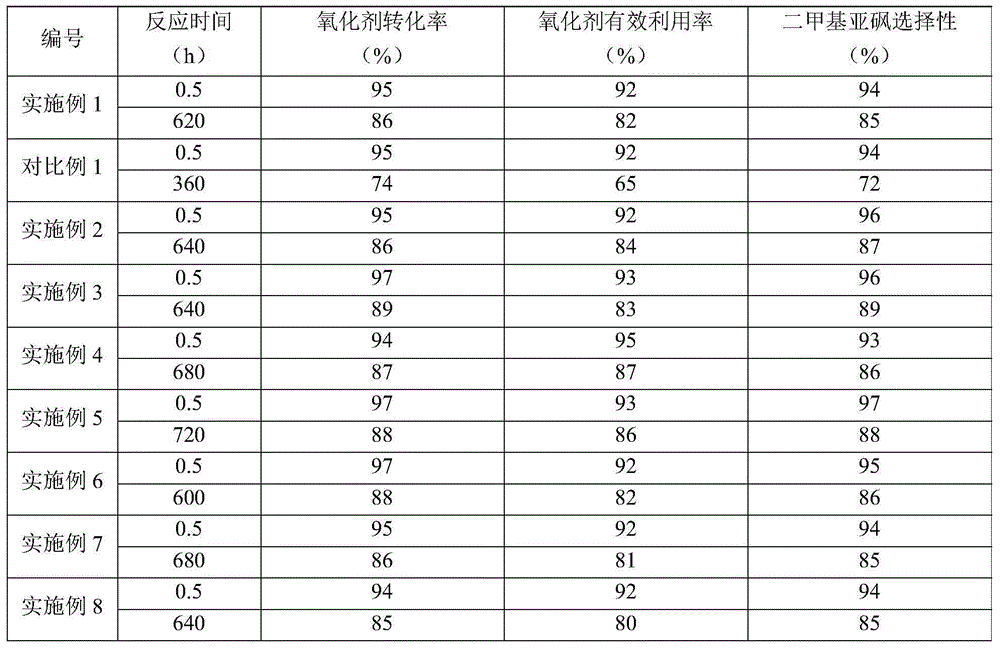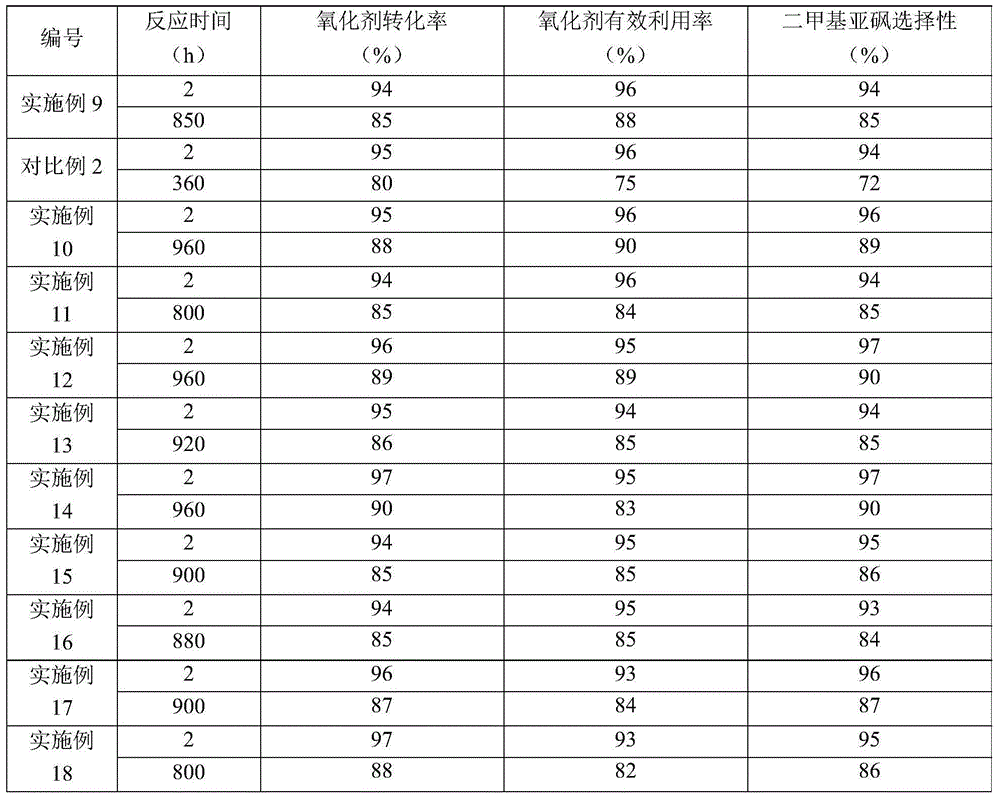Thioether oxidation method
A technology for oxidizing sulfide and sulfide, applied in chemical instruments and methods, preparation of organic compounds, chemical recovery, etc., can solve the problem of high cost of anodization, achieve stable oxidant conversion rate, prolong single-pass service life, and reduce regeneration. The effect of frequency
- Summary
- Abstract
- Description
- Claims
- Application Information
AI Technical Summary
Problems solved by technology
Method used
Image
Examples
Embodiment 4、9-16 and 19
[0091] Following examples 4, 9-16 and 19 adopt the following method to measure the activity of catalyst:
[0092] Catalyst, 36% by weight of ammonia water (as NH 3 meter), 30% by weight of hydrogen peroxide (as H 2 o 2 ), tert-butanol and cyclohexanone by mass ratio = 1:7.5:10:7.5:10 and then stirred and reacted at 80°C under atmospheric pressure for 2h, filtered the reactant, and analyzed the obtained liquid phase by gas chromatography The composition of the catalyst is analyzed, and the conversion rate of cyclohexanone is calculated by the following formula and used as the activity of the catalyst,
[0093] The conversion rate (%) of cyclohexanone=[(the molar amount of cyclohexanone added−the molar amount of unreacted cyclohexanone) / the molar amount of cyclohexanone added]×100%.
Embodiment 1
[0096] The catalyst (i.e. shaped titanium-silicon molecular sieve TS-1 is a spherical catalyst with a volume average particle diameter of 500 μm, the content of titanium-silicon molecular sieve TS-1 in the catalyst is 80% by weight, the content of silicon oxide is 20% by weight, and the density is 0.79 g / cm 3 ) is packed in a fixed-bed reactor to form a catalyst bed, wherein the number of the catalyst bed is 1 layer, and the aspect ratio of the catalyst bed is 10.
[0097] Dimethyl sulfide, hydrogen peroxide (provided in the form of 30% by weight hydrogen peroxide) as an oxidizing agent and acetone as a solvent were mixed and fed into a fixed bed reactor and flowed through the catalyst bed. Among them, the molar ratio of dimethyl sulfide to hydrogen peroxide is 1:0.5, the initial molar ratio of dimethyl sulfide to acetone is 1:5, and the initial weight hourly space velocity of solvent acetone is 15h -1 . The temperature in the catalyst bed was 40° C., and the pressure in the...
Embodiment 2
[0103] Adopt the method identical with embodiment 1 to oxidize dimethyl sulfide, difference is, also send into the ammoniacal liquor (concentration is 25% by weight) in the fixed-bed reactor, to form by dimethyl sulfide, hydrogen peroxide and acetone The pH of the liquid mixture was adjusted to 7.0. When the reaction reaches 640 hours, the weight hourly space velocity of acetone is 27.2h -1 . The results obtained for 0.5 hours and 640 hours of reaction are listed in Table 1.
PUM
| Property | Measurement | Unit |
|---|---|---|
| length | aaaaa | aaaaa |
| adsorption capacity | aaaaa | aaaaa |
| particle size | aaaaa | aaaaa |
Abstract
Description
Claims
Application Information
 Login to View More
Login to View More - R&D
- Intellectual Property
- Life Sciences
- Materials
- Tech Scout
- Unparalleled Data Quality
- Higher Quality Content
- 60% Fewer Hallucinations
Browse by: Latest US Patents, China's latest patents, Technical Efficacy Thesaurus, Application Domain, Technology Topic, Popular Technical Reports.
© 2025 PatSnap. All rights reserved.Legal|Privacy policy|Modern Slavery Act Transparency Statement|Sitemap|About US| Contact US: help@patsnap.com



